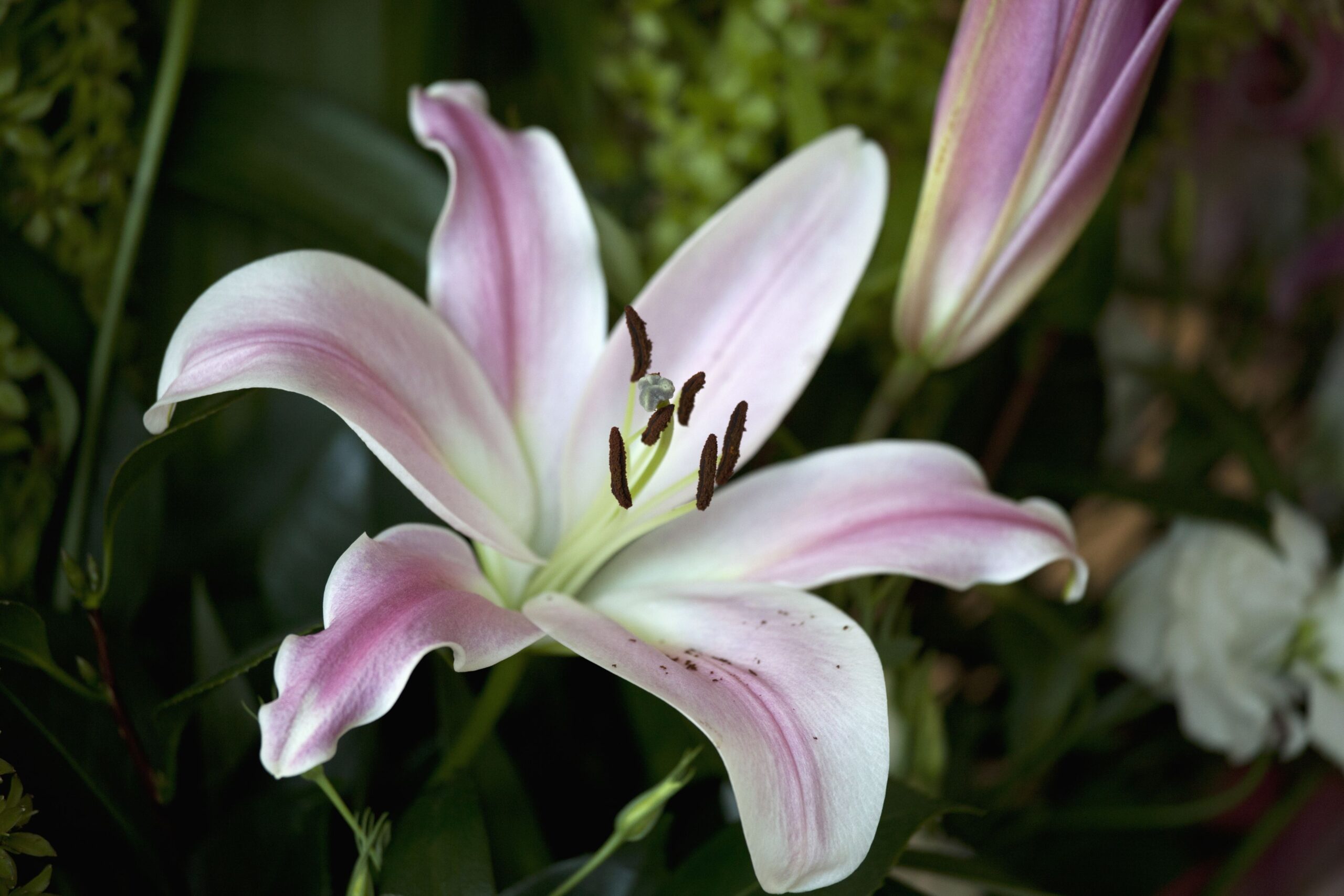The Lily flower, scientifically known as Lilium, is a mesmerizing and elegant plant that has captured the hearts of people all around the world. With its stunning petals and intoxicating fragrance, the Lily is not only a beautiful addition to any garden but also holds deep symbolic meanings in various cultures. In this article, we will explore the fascinating world of the Lily flower plant, delve into its history, symbolism, and cultivation techniques, and uncover the reasons why it continues to be a beloved flower among gardening enthusiasts and flower enthusiasts alike.
The History of the Lily Flower Plant
The history of the Lily flower plant dates back thousands of years, with its origins rooted in ancient civilizations. The first depictions of Lilies can be traced back to ancient Egyptian art, where they were often portrayed in wall paintings and hieroglyphs. The Egyptians considered the Lily to be a symbol of fertility and rebirth, and they even used it in religious ceremonies and rituals.
Throughout history, the Lily has also held significant importance in Greek and Roman mythology. According to Greek mythology, the Lily was believed to have sprung from the milk of the goddess Hera when she was breastfeeding her son Hercules. The Romans associated the Lily with the goddess Venus, the symbol of love and beauty.
During the Middle Ages, the Lily became associated with the Virgin Mary in Christian symbolism. It was often depicted in religious paintings and sculptures, representing purity, innocence, and the Virgin Mary’s role as the mother of Jesus.
The Symbolism of the Lily Flower
The Lily flower is rich in symbolism and carries different meanings depending on its color and cultural context. Here are some of the most common symbolic meanings associated with the Lily:
Purity and Innocence
One of the most prevalent meanings of the Lily flower is purity and innocence. Its pristine white petals have long been associated with purity and the Virgin Mary, making it a popular choice in religious ceremonies and weddings.
Fertility and Motherhood
Due to its association with the goddess Hera in Greek mythology, the Lily is often seen as a symbol of fertility and motherhood. It represents the power of creation and the ability to bring new life into the world.
Passion and Romance
While white Lilies symbolize purity, other colors, such as red and pink, are associated with passion and romance. These vibrant hues evoke feelings of love and desire, making them a popular choice for Valentine’s Day bouquets and romantic gestures.
Remembrance and Sympathy
In some cultures, Lilies are also associated with remembrance and sympathy. They are often used in funeral arrangements to honor and remember the departed, symbolizing the purity and innocence of the soul.
Cultivating the Lily Flower Plant
Now that we have explored the rich history and symbolism of the Lily flower plant, let’s delve into the practical aspects of cultivating this stunning flower in your own garden. Whether you are a seasoned gardener or a beginner, growing Lilies can be a rewarding experience. Follow these steps to ensure successful cultivation:
Choosing the Right Variety
There are numerous varieties of Lilies available, each with its own unique characteristics and growing requirements. Before you start planting, research the different types of Lilies and choose the ones that best suit your climate and garden conditions.
Preparing the Soil
Lilies prefer well-drained soil that is rich in organic matter. Before planting, prepare the soil by adding compost or well-rotted manure to improve its fertility and drainage. Avoid heavy clay soils, as they can cause root rot.
Planting Lilies
Planting Lily bulbs should be done in the fall, as they require a period of cold dormancy to bloom successfully. Dig a hole that is three times the depth of the bulb and place the bulb in the hole with the pointed side facing up. Space the bulbs according to the recommended spacing for the specific variety you are planting.
Providing Adequate Sunlight
Lilies thrive in full sun or partial shade, depending on the variety. Ensure that your chosen planting location receives at least six hours of direct sunlight per day. If you live in a hot climate, consider providing some afternoon shade to protect the plants from scorching.
Watering and Fertilizing
Keep the soil consistently moist but not waterlogged. Lilies require regular watering, especially during dry periods. Apply a balanced fertilizer in the spring to promote healthy growth and abundant blooms.
Supporting the Stems
As Lilies grow, their stems can become top-heavy and prone to bending or breaking. To prevent this, use stakes or a plant support system to provide stability and keep the stems upright.
Dealing with Pests and Diseases
Like any other plant, Lilies are susceptible to pests and diseases. Common problems include aphids, slugs, and botrytis. Monitor your plants regularly and take appropriate measures if any issues arise, such as using organic pest control methods or removing infected parts.
Frequently Asked Questions
1. How long do Lily flowers bloom?
Lilies typically bloom for two to three weeks, depending on the variety and growing conditions. Some early-blooming varieties may have a shorter blooming period, while others can extend their bloom time with proper care.
2. Can Lilies be grown in pots?
Yes, Lilies can be successfully grown in pots or containers. Choose a large enough container that allows for proper root development and drainage. Ensure that the potting mix is well-drained and provide adequate sunlight and water for the plants.
3. How do I prevent Lily bulbs from rotting?
To prevent Lily bulbs from rotting, ensure that the soil is well-drained and avoid overwatering. Plant the bulbs at the recommended depth, as planting too shallow or too deep can increase the risk of bulb rot. Additionally, avoid planting Lilies in areas prone to waterlogging or heavy clay soils.
4. Can I cut Lily flowers for indoor arrangements?
Yes, you can cut Lily flowers for indoor arrangements. However, it is best to wait until the flowers have fully opened before cutting them. Use a clean, sharp knife or scissors to make a diagonal cut and immediately place the stems in a vase with water and floral preservatives.
5. When should I divide Lily bulbs?
Lily bulbs can be divided every three to four years to maintain their vigor and prevent overcrowding. The best time to divide Lily bulbs is in the fall, after the foliage has died back. Dig up the bulbs, separate the offsets, and replant them at the desired spacing.
Conclusion
The Lily flower plant is not only a breathtaking addition to any garden but also a powerful symbol of purity, fertility, passion, and remembrance. Its rich history and diverse symbolism have made it a beloved flower in various cultures around the world. By following the proper cultivation techniques, you can enjoy the beauty and fragrance of Lilies in your own garden. Whether you choose the classic white Lilies or opt for vibrant colored varieties, these elegant flowers are sure to bring joy and inspiration to your outdoor space.
Frequently Asked Questions
1. How long do Lily flowers bloom?
Lilies typically bloom for two to three weeks, depending on the variety and growing conditions. Some early-blooming varieties may have a shorter blooming period, while others can extend their bloom time with proper care.
2. Can Lilies be grown in pots?
Yes, Lilies can be successfully grown in pots or containers. Choose a large enough container that allows for proper root development and drainage. Ensure that the potting mix is well-drained and provide adequate sunlight and water for the plants.
3. How do I prevent Lily bulbs from rotting?
To prevent Lily bulbs from rotting, ensure that the soil is well-drained and avoid overwatering. Plant the bulbs at the recommended depth, as planting too shallow or too deep can increase the risk of bulb rot. Additionally, avoid planting Lilies in areas prone to waterlogging or heavy clay soils.
4. Can I cut Lily flowers for indoor arrangements?
Yes, you can cut Lily flowers for indoor arrangements. However, it is best to wait until the flowers have fully opened before cutting them. Use a clean, sharp knife or scissors to make a diagonal cut and immediately place the stems in a vase with water and floral preservatives.
5. When should I divide Lily bulbs?
Lily bulbs can be divided every three to four years to maintain their vigor and prevent overcrowding. The best time to divide Lily bulbs is in the fall, after the foliage has died back. Dig up the bulbs, separate the offsets, and replant them at the desired spacing.
Summary
The Lily flower plant is a captivating and meaningful addition to any garden. With its rich history, diverse symbolism, and stunning blooms, it continues to captivate people around the world. Whether you are drawn tothe Lily for its purity and innocence, its representation of fertility and motherhood, or its passionate and romantic associations, there is no denying the beauty and allure of this remarkable flower. Cultivating Lilies in your own garden can be a rewarding experience, and by following the proper techniques, you can enjoy their stunning blooms year after year. Remember to choose the right variety for your climate and garden conditions, prepare the soil properly, provide adequate sunlight and water, and take necessary measures to protect your Lilies from pests and diseases. Whether you choose to admire the Lily for its visual appeal or appreciate its deep symbolic meanings, this extraordinary flower is sure to bring joy and inspiration to your outdoor space.
Frequently Asked Questions
1. How long do Lily flowers bloom?
Lilies typically bloom for two to three weeks, depending on the variety and growing conditions. Some early-blooming varieties may have a shorter blooming period, while others can extend their bloom time with proper care.
2. Can Lilies be grown in pots?
Yes, Lilies can be successfully grown in pots or containers. Choose a large enough container that allows for proper root development and drainage. Ensure that the potting mix is well-drained and provide adequate sunlight and water for the plants.
3. How do I prevent Lily bulbs from rotting?
To prevent Lily bulbs from rotting, ensure that the soil is well-drained and avoid overwatering. Plant the bulbs at the recommended depth, as planting too shallow or too deep can increase the risk of bulb rot. Additionally, avoid planting Lilies in areas prone to waterlogging or heavy clay soils.
4. Can I cut Lily flowers for indoor arrangements?
Yes, you can cut Lily flowers for indoor arrangements. However, it is best to wait until the flowers have fully opened before cutting them. Use a clean, sharp knife or scissors to make a diagonal cut and immediately place the stems in a vase with water and floral preservatives.
5. When should I divide Lily bulbs?
Lily bulbs can be divided every three to four years to maintain their vigor and prevent overcrowding. The best time to divide Lily bulbs is in the fall, after the foliage has died back. Dig up the bulbs, separate the offsets, and replant them at the desired spacing.
In conclusion, the Lily flower plant is not only a stunning addition to any garden, but it also holds deep symbolic meanings that have resonated throughout history. Its association with purity, fertility, passion, and remembrance has made it a beloved flower in various cultures. By following the proper cultivation techniques, you can enjoy the beauty and fragrance of Lilies in your own garden. Whether you choose the classic white Lilies or opt for vibrant colored varieties, these elegant flowers are sure to bring joy, inspiration, and a touch of enchantment to your outdoor space.



